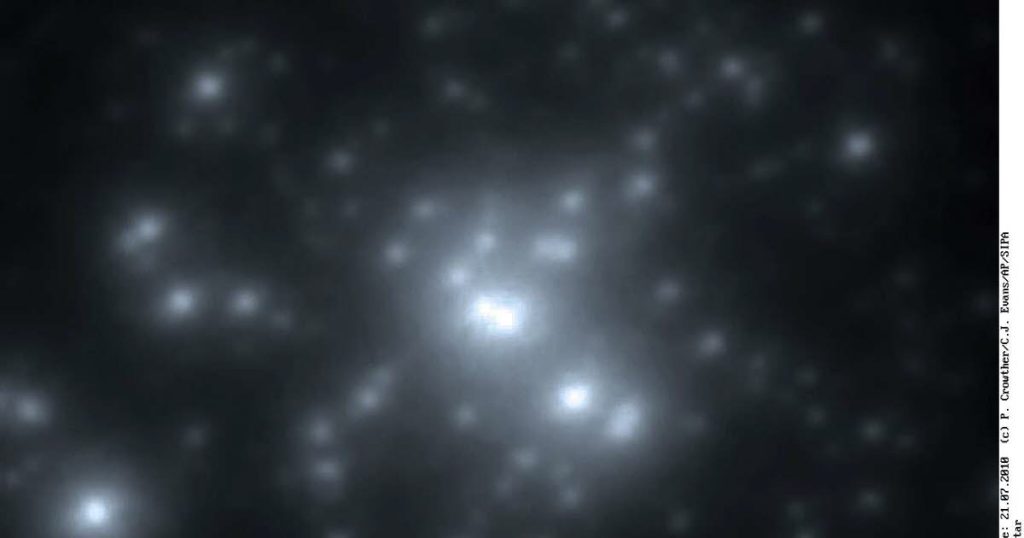
space. The heaviest star in the universe does not weigh as much as previously estimated
The largest star discovered in the universe is not as massive as previously estimated, according to new observations that suggest a similar scenario for other, more massive stars.
R136a1 is located in the heart of the Tarantula Nebula, in a group of stars in the Magellanic Cloud, near our galaxy, and was discovered in 1985. In 2010, a team of astronomers classified it as the largest mass ever observed, 320 times more massive than the Sun. Recent observations have revised the figure to 250 solar masses.
Between 170 and 230 solar masses
This time, a team using the Gemini North and Gemini South telescopes, located in Hawaii and Chile respectively, have reduced its mass to between 170 and 230 solar masses, according to a study to appear in Astrophysical Journal.
“Our results show that the most massive star we currently know is not as massive as we thought,” said Venu Kalari, lead author of the study and an astronomer at US NOIRLab, who operates the Gemini Telescopes.
“This indicates that the upper limit of the stellar mass may also be smaller than we thought,” he added in a NOIRLab statement released Thursday.
The stars that are hard to see
Stars like R136a1, which are the most massive and massive in the universe, are difficult to observe.
First, because their lifespan is very short, counted in a few million years, when the Sun, a more common star, has a life expectancy of ten billion years.
Then because they are generally located in compact star clusters shrouded in stellar dust, which makes it difficult to accurately measure the brightness of their members. However, it is this luminosity in particular that makes it possible to determine the mass of the star.
The NOIRLab team obtained the most accurate image of the stars in the cluster, and therefore of R136a1, using a technique called specular interferometry. The Zorro photographer took a very large number of shots, 40,000 in this case, with a very short exposure time, 60 milliseconds. This allowed him to overcome the influence of the Earth’s atmosphere, which disturbed the observations.
The monitoring technology used before has never been used for this kind of thing. This leads the study’s authors to take their findings “with caution,” according to Mr. Kalari. While waiting for more efficient instruments, such as the Extremely Large Telescope (ELT), expected in 2027, to improve the measurement.

“Organizer. Social media geek. General communicator. Bacon scholar. Proud pop culture trailblazer.”
